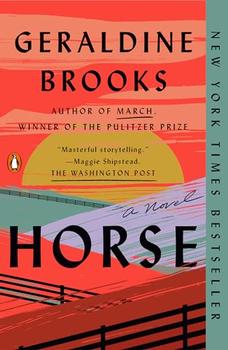Summary | Excerpt | Reading Guide | Reviews | Beyond the Book | Readalikes | Genres & Themes | Author Bio

A Novel
by Geraldine Brooks
Over time, her bedroom became a mini natural history museum, filled with skeletons of lizards, mice, birds, displayed on plinths fashioned from salvaged wire spools or cotton reels, and identified with carefully inked Latin tags. This did not endear her to the tribe of teenage girls who inhabited her high school. Most of her classmates found her obsession with necrotic matter gross and creepy. She became a solitary teen, which perhaps accounted for her high place in the state in three subjects when the final public exam results were published. She continued to distinguish herself as an undergrad and came to Washington on a scholarship to do her master's in zoology.
It was the kind of thing Australians liked to do: a year or two abroad to take a look at the rest of the world. In her first semester, the Smithsonian hired her as an intern. When they learned she knew how to scrape bones, she was sent to do osteo prep at the Museum of Natural History. It turned out that she had become extremely skilled from working on small species. A blue whale skeleton might impress the public, but Jess and her colleagues knew that a blue wren was far more challenging to articulate.
She loved the term "articulate" because it was so apt: a really good mount allowed a species to tell its own story, to say what it was like when it breathed and ran, dived or soared. Sometimes, she wished she'd lived in the Victorian era, when craftsmen competed to be the best at capturing movement-a horse rearing required an absolute balance in the armature, a donkey turned to scratch its flank demanded a sculptor's sense of curvature. Making these mounts had become a craze among wealthy men of the time, who strove to produce specimens dedicated to beauty and artistry.
Contemporary museums had scant place for that. Mounting bones destroyed information-adding metal, removing tissue-so very few skeletons were articulated. Most bones were prepped, numbered, and then stored away in drawers for comparative measurement or DNA sampling.
When Jess did that work, her nostalgia for the craftsmanship of the past faded, overtaken by her fascination with the science. Every fragment told a story. It was her job to decode them and help scientists extract the testimony from each fossilized chip. The specimens might have come to the museum as the product of dumb luck or the result of days of exacting scientific endeavor. A hobbyist might have stumbled upon a mammoth's tibia uncovered by the lashings of a winter storm. Or a paleontologist might have collected a tiny vole's tooth after weeks of painstaking soil sifting. Jess made her labels on a laser printer and included GPS coordinates for where the specimen had been found. Past curators left a more personal mark, their handwritten cards in sepia-toned ink.
Those nineteenth-century preparators had plied their craft ignorant of DNA and all the vital data it would one day yield. It thrilled Jess to think that when she closed the drawer on a newly filed specimen, it might be opened in fifty or a hundred years by a scientist seeking answers to questions she didn't yet know how to ask, using tools of analysis she couldn't even yet imagine.
She hadn't meant to stay in America. But careers can be as accidental as car wrecks. Just as she graduated, the Smithsonian offered her a four-month contract to go to French Guiana to collect rainforest specimens. Not many girls from Burwood Road in western Sydney got to go to French Guiana and bounce through the rainforest with scorpion specimens pegged across the jeep like so much drying laundry. Another offer followed: Kenya, to compare contemporary species on Mount Kilimanjaro with those gathered by Teddy Roosevelt's expedition a hundred years earlier.
At the end of that trip, Jess was packing her few possessions, ready to go home to get on with what she still considered her real life, when the Smithsonian offered her a permanent position, managing their vertebrate Osteology Prep Lab at the Museum Support Center in Maryland. It was a brand-new facility and the job vacancy was unexpected. The manager who had designed the lab had been struck down by a sudden allergy to frass, the soft, dusty excrement of dermestid beetles. Those beetles were the preferred and best means of bone cleaning, so being unable to work with them without breaking into hives signaled the need for a change of occupation.
Excerpted from Horse by Geraldine Brooks. Copyright © 2022 by Geraldine Brooks. All rights reserved. No part of this excerpt may be reproduced or reprinted without permission in writing from the publisher.
Use what talents you possess: The woods would be very silent if no birds sang there except those that sang best
Click Here to find out who said this, as well as discovering other famous literary quotes!
Your guide toexceptional books
BookBrowse seeks out and recommends the best in contemporary fiction and nonfiction—books that not only engage and entertain but also deepen our understanding of ourselves and the world around us.